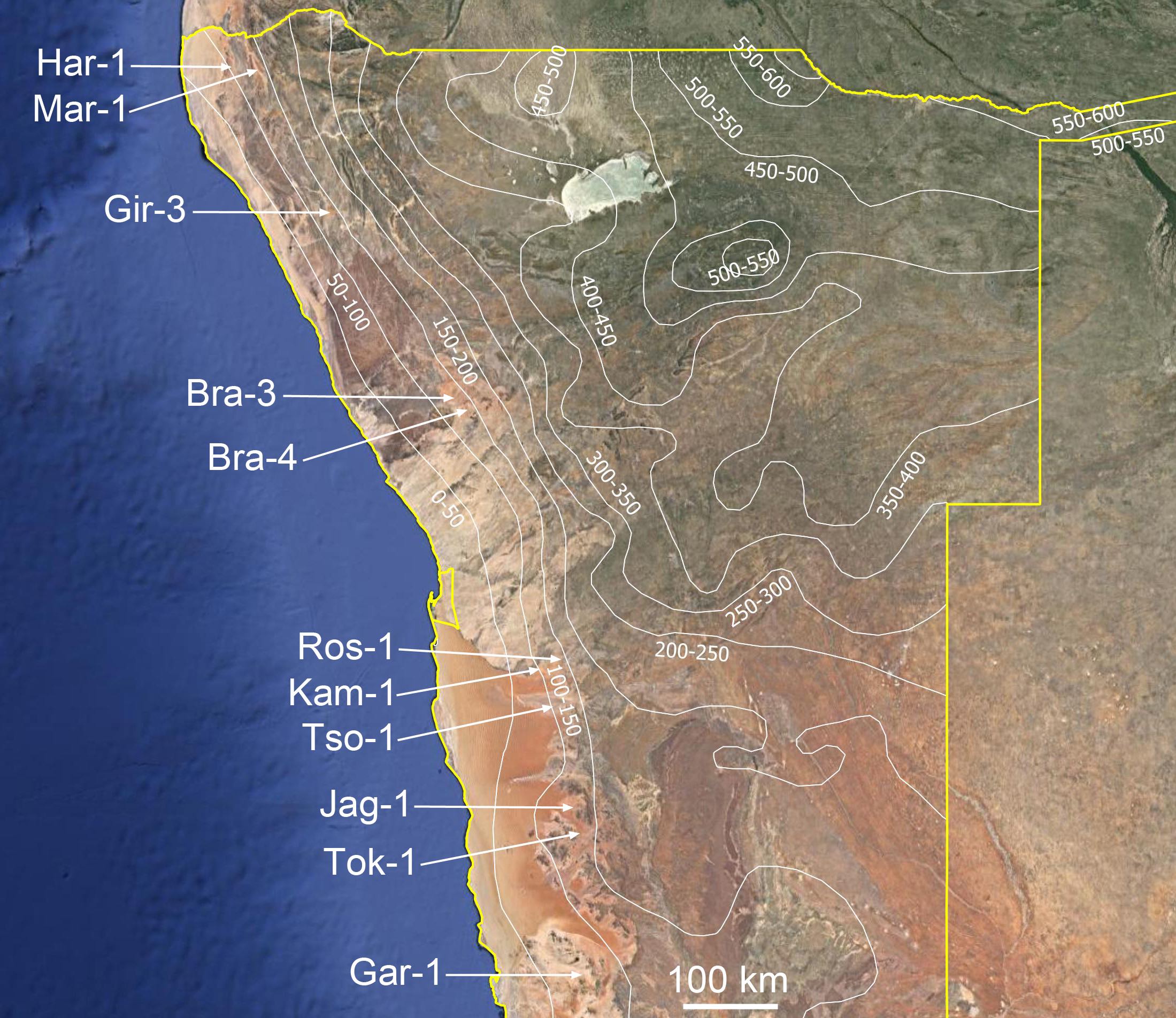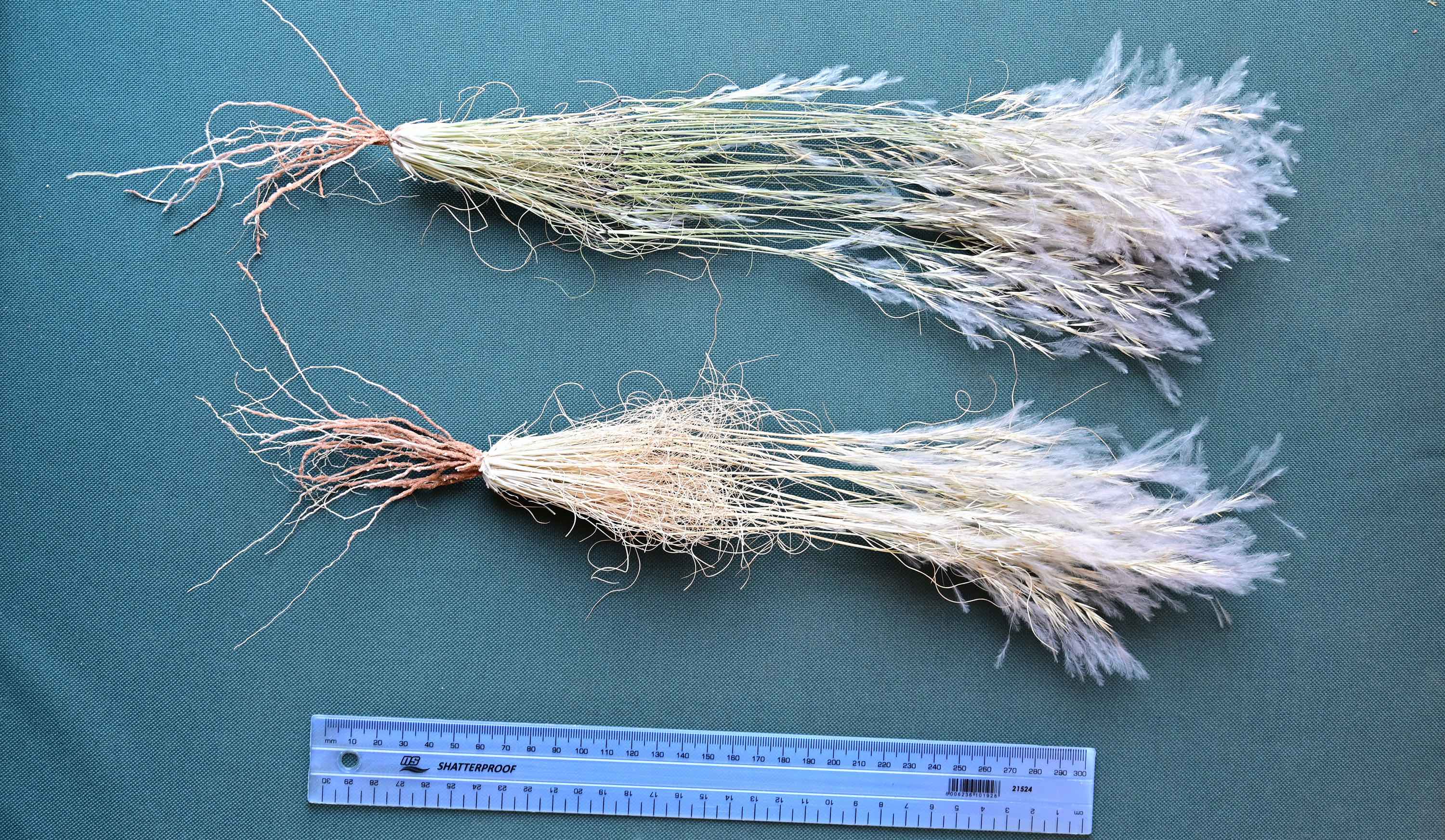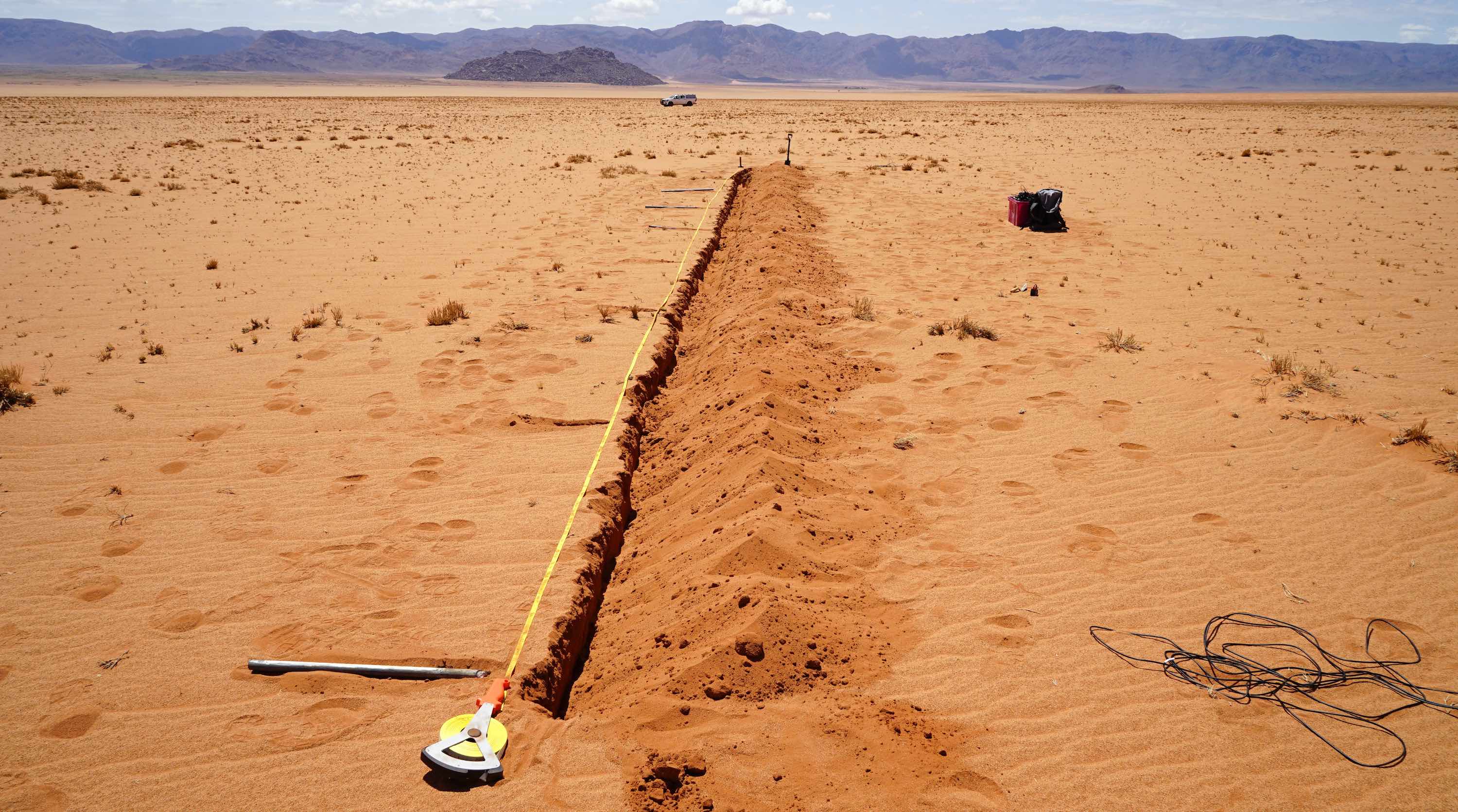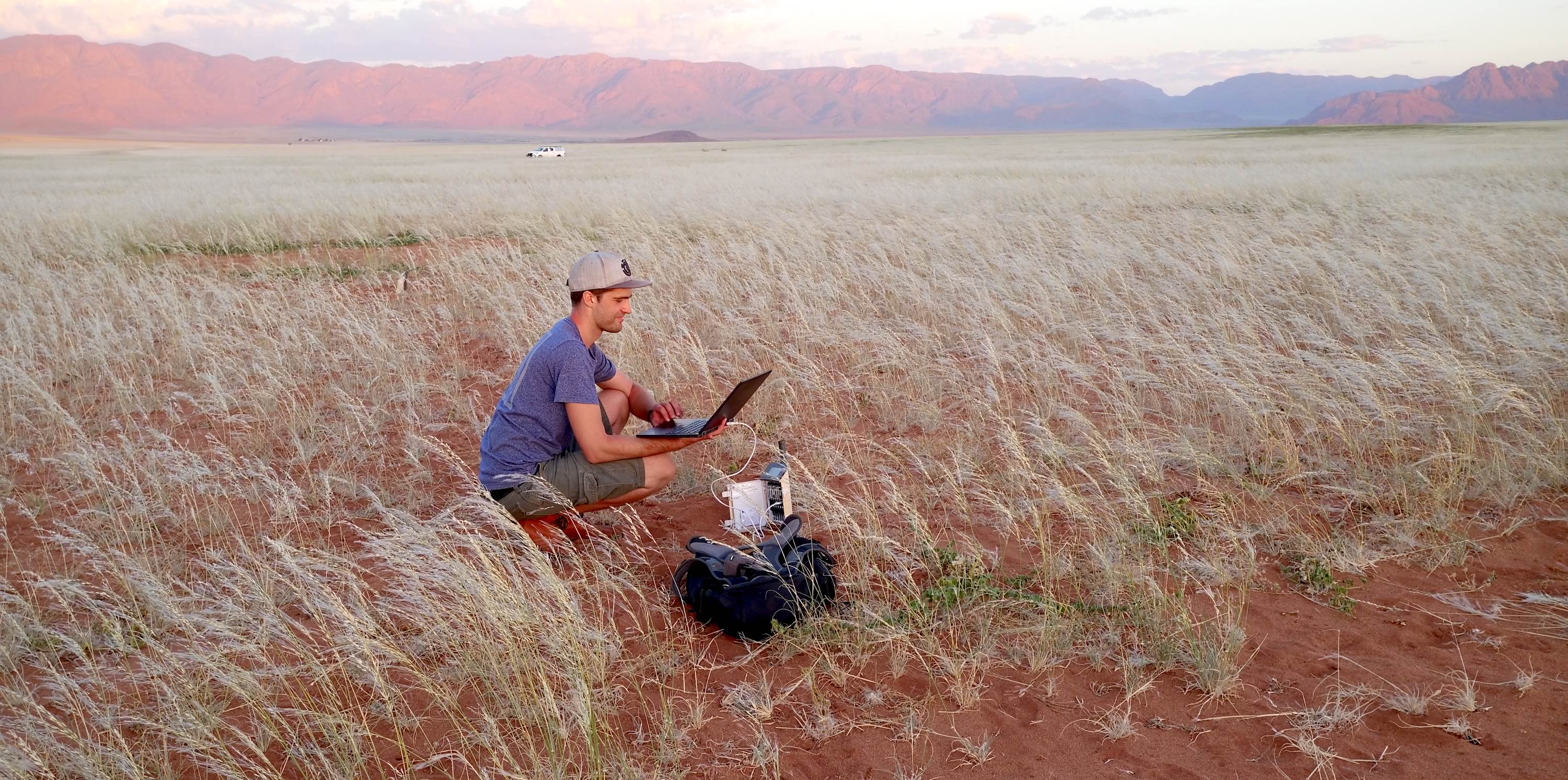
The fairy circles of Namibia have been a controversial research topic for over 50 years. Scientists have proposed several hypotheses over this time, including gases, termites, ants or euphorbias. Many of these ideas were based on what is known as correlation: e.g. one finds many euphorbias or termites nearby or within the circles. While observations and correlation provide a starting point for developing a scientific hypothesis, they do not provide final answers.
A well-known saying among scientists warns us of this issue: correlation does not imply causation. What does that mean? Finding a relationship between two different things does not necessarily mean that the one causes the other. It might be a coincidence, like the fact that most of the cars in Namibia are white and most Namibians like eating meat.
Alternatively, there might be an indirect link, rather than a direct cause-and-effect relationship. For example, finding many mosquitoes around potholes does not mean that mosquitoes cause potholes. We know that vehicles cause potholes, which fill with water during the rainy season. Mosquitoes like to breed in puddles, some of which happen to form in potholes.
Finding out what causes certain natural events is one of the main occupations of researchers working in the natural sciences like biology. How do we figure out if our initial observations are correlation only, or real causation? First, we need some kind of experiment or comparison between the phenomenon that we are studying and other normal or 'control' conditions where it does not occur. Having decided what kind of evidence we need to support our hypothesis, we must collect data and measurements from the field. It is important to collect enough data to allow for statistical analysis, as only one or two data points may not be representative of the event we are studying.
With this in mind, let’s have a look at the current hypotheses about what causes fairy circles in Namibia.

Euphorbias and fairy circles: coincidence
The Euphorbia hypothesis is based on the observation that Euphorbia shrubs and fairy circles occur together in some areas. This hypothesis proposes that dying Euphorbias create the conditions for fairy circles to form by making the soil unsuitable for grass growth for many years after the Euphorbias are gone. However, large parts of the Namib Desert with abundant fairy circles are completely devoid of Euphorbias.
Supporters of the Euphorbia hypothesis try to explain the absence of euphorbias from extensive fairy circle areas by claiming that the plants died out in these areas long ago due to climate change. This is a nice story, but it does not provide a scientific basis to explain the origin of fairy circles. Without proof that Euphorbias used to occur in these areas, this is pure speculation.
My team have presented data that contradict the Euphorbia hypothesis, by showing that long-dead Euphorbias do not start looking like fairy circles, and that there is a big size difference between Euphorbias and fairy circles that occur in the same areas. In short, the fact that fairy circles and Euphorbias often occur in the same places is merely a coincidence, like white cars and meat eaters in Namibia.
The sand termite hypothesis: an indirect link rather than cause-effect
In 2013, an article published in Science appeared, proposing that sand termites cause fairy circles by foraging on the roots of freshly germinated grasses
thus creating patches with no grass. Surprisingly, no scientific data (measurements, replicates, statistics) were presented that systematically showed fresh grass roots being damaged by termites. About ten years later, the same author wrote a 376-page book that includes the sand termite hypothesis but still does not present systematic data in support of the proposed core mechanism, which is the active killing of green grasses by termites.
It would have been quite easy to collect such data in the past ten years, because several good rainfall seasons allowed green grasses to germinate within fairy circles. Simple measurements on the root length or biomass could have been made to prove that termites were eating living grass roots within fairy circles. I have yet to see any data of this kind presented to support the termite theory based on systematic field data from the Namib Desert. In contrast, another study that investigated the herbivory behaviour of sand termites in the Namib revealed that they selectively graze the outer grey (or dead) layer of grass stems but not the living grass material. In agreement with previous studies, this research classified the sand termite as a typical detritus feeder: i.e. it eats dead plant parts rather than killing living grasses.
My team systematically investigated the process of grass death within fairy circles and published our findings in October 2022. We excavated about 500 grasses from within the fairy circles and the surrounding vegetation and investigated how they died immediately after rainfall events in the Namib. Although the grasses inside fairy circles quickly died after rainfall as expected, their roots were initially undamaged, showing no signs of termite herbivory.

We found that the grasses died due to a lack of water rather than damaged roots. Only when the grasses had been dead for a longer time did we find increased root damage, which can be attributed to the detritus feeding of sand termites. This finding confirms that sand termites prefer to feed on dead plant matter rather than growing green grasses. Our results are in line with previous surveys by Dr. Eugene Marais from Gobabeb Research Institute who did not find sand termites in many fairy circles throughout the fairy circle range in Namibia.
In a recent article in the New York Times, several independent fairy circle researchers agreed that, based on the new data, termite activity does not cause fairy circles. Nonetheless, the two may be indirectly linked, like mosquitoes and potholes.
The self-organisation hypothesis: the strongest current contender

Our latest study provides more evidence in support of another hypothesis, known as self-organisation. This hypothesis proposes that plants competing for water in an arid environment create patches of bare soil between them, known as fairy circles.
We found that the roots of the dead grasses within the fairy circles were as long or even longer than the roots of grasses outside of the circles. While longer roots cannot be linked to any termite herbivory, this indicates that the grasses trying to grow inside fairy circles were suffering from water stress. Plants that do not have enough water in the top few centimetres of soil will grow longer roots to find it. If they fail to find water, they die quickly, which is what happens in fairy circles.

Fairy circles are known to store more moisture at layers below 20 to 30 cm soil depth, but the only soil layer that is relevant to new seedlings is the upper 10 cm of soil that their roots can reach. Field measurements have shown that the upper 10 cm of soil within the fairy circles is drier after typical rainfall events than the upper 10 cm of soil in the immediate vicinity. This provides a plausible reason for the grasses dying within 10 to 20 days of germination inside the fairy circles.
Researchers have demonstrated with data evidence from the field that water can move up to 7.5 m horizontally within a short time in fairy circles in the sandy soils of the NamibRand Nature Reserve. My team recorded results in the same study site that provides indirect evidence for horizontal water loss caused by grass growing around the fairy circles.

We measured the loss of soil moisture within and around fairy circles after rainfall events in these desert study sites. We found that there was almost no difference in soil moisture after the first rainfall event, when all of the grasses were still dry or absent. However, when a second rainfall event occurred while the grasses were actively growing around the circles, the soil inside fairy circles suddenly lost its moisture three times faster than before the grasses outside the circles started growing. No grass was growing in the circles at this time, so the rapid water loss must be caused by something outside the circles.
We concluded that the grasses on the edge of the circles and within the surrounding vegetation draw the water from the upper soil layer within the fairy circle. Any seedlings trying to establish within the circle soon die due to lack of water in this top layer of soil. In this regard, the absolute values of soil moisture may appear high after rainfall, but in a desert environment, this volatile water is not enough to allow the growth of a continuous vegetation cover. That is why bare patches form. Possibly, microbial activity that is unique to fairy circles may further hinder the establishment of young grass seedlings.
Conclusion

Euphorbias, sand termites and fairy circles all occur in arid parts of Namibia, but we need to go beyond such basic observations to determine what causes this natural phenomenon. Correlation and speculation may provide starting points for creating hypotheses, but they can only be tested through data collection and careful scientific analysis. Based on our data and analyses, we ruled out the Euphorbia hypothesis as a coincidence. Sand termites may be associated with fairy circles because termites feed on dead plant matter, which becomes available when young grass seedlings fail to establish themselves in the dry top layer of soil.
Our current best working hypothesis is self-organisation, whereby fairy circles are created by the intense competition for water between plants that grow in arid environments. While fairy circles may no longer be that mysterious, they have provided an excellent subject for careful study and scientific debate.
If you enjoyed this page, then you might also like:



For articles on similar topics, please click one of the following options:

We use cookies to monitor site usage and to help improve it. See our Privacy Policy for details. By continuing to use the site, you acknowledge acceptance of our policy.